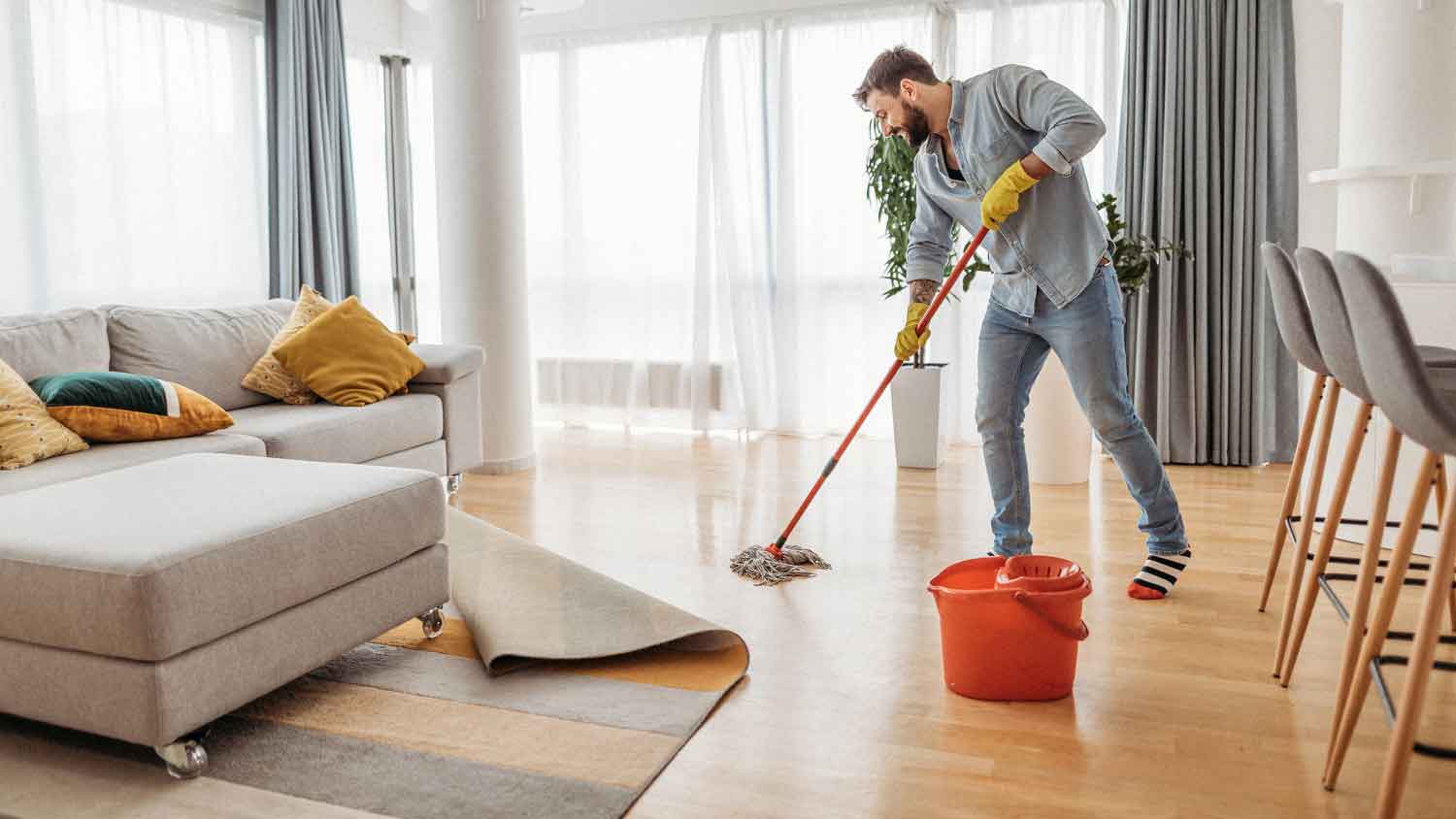5 Easy Tips to Remove Stubborn Rust Stains in a Flash
Don’t let a little rust stain ruin some of your favorite household pieces


If you’re noticing dark orange stains on your clothing, curtains, or furniture, these could be the result of rust stains—and figuring out how to treat them can leave you scratching your head. Bleach can set rust stains and make them permanent, and running stained linens through the dryer can also spell doom by making the rust nearly impossible to remove.
However, you don’t need to despair when faced with a dreaded rust stain, as you can grab a few kitchen pantry items to get rid of them for good.
1. Add Vinegar
Distilled white vinegar is essential in any cleaning toolkit, and it can also act as a useful rust stain remover. There are many different ways to use vinegar to remove rust stains, depending on what you are trying to clean.
"Distilled vinegar is known as a natural, cost effective, and non-toxic cleaner,” said Asya Biddle, Angi Expert Review Board member and manager of The Dustbusters, a family-owned and operated janitorial company in Williamsport, PA. “You can utilize it to remove rust, clean appliances, countertops, and glass, and as an additive in your laundry wash cycle to remove fabric odors."
Soak Small, Hard Objects in Vinegar
For small objects, like a paring knife or a house key, you can remove rust stains by simply soaking the thing you want to clean in a bowl of distilled white vinegar for one to 24 hours. After soaking, rinse the object and thoroughly dry it.
Use Vinegar and Salt on Large, Hard Surfaces
To clean rust stains from the bathroom sink or around the edges of the bathtub, vinegar and salt are a dynamic duo.
Apply distilled white vinegar directly to the stain.
Sprinkle table salt over the rust stain and vinegar.
Allow the mixture to sit for 30 minutes.
Use crumpled aluminum foil or steel wool to scrub the area gently.
Rinse with water and dry with a clean towel.
Place a Cloth Soaked in Vinegar on Fabric Surfaces
Vinegar and salt will also help lift rust stains from fabrics.
Sprinkle a rust stain with salt.
Soak a clean cloth in distilled white vinegar, then wring it out.
Place the cloth over the salt and rust stain.
Check the stain after about 30 minutes.
If the stain has lifted, remove the cloth and vacuum the spot.
If the stain has not lifted after 30 minutes, let the cloth sit longer. Check every 30 minutes or so.
For tough stains, you may need to add lemon juice or commercial rust remover to the area.
2. Squeeze Some Lemon Juice
Whether it’s the stained fabric of an outdoor sofa or a ring left behind from a shaving cream can in the shower, acidic lemon juice can help clean many surfaces. For fresher rust stains, the lemon juice might work fine on its own to clean the surface. Otherwise, use this tip to loosen the rust before applying another homemade or store-bought remover.
Treat Rust Stains on Fabrics With Lemon Juice
Start by applying steam from a steamer or boiled water over the fabric.
Rub a cut lemon or squeeze lemon juice over the stain.
Leave the fabric to dry. If possible, sit it outside in the sun to better break down the stain.
Launder the fabric as usual for washable fabrics, or repeat the process until the stain is gone for non-washable fabrics.
Treat Rust Stains on Hard Surfaces With Lemon Juice
Rub a cut lemon in salt.
Scrub the stained surface with salt and lemon to lift the stain. (Spot testing is always a good idea here).
For deeper rust stains on hard surfaces, dip the lemon in baking soda, then scrub.
Wipe dry with a cleaning towel.
3. Try Cream of Tartar
Cream of tartar is a staple for snickerdoodle cookies and meringues, but it can also help you scrub away rust stains.
Clean Rust Stains on Fabric With Cream of Tartar
Mix 6 tablespoons of cream of tartar in 2 pints of boiling water.
Soak the fabric in the water and cream of tartar for one to two hours.
For washable fabrics, launder the item as usual.
For non-washable fabrics, rinse the area and let it dry.
Clean Rust Stains on Hard Surfaces
Sprinkle cream of tartar over the rust stain.
Slowly add drops of water or hydrogen peroxide until it forms a paste.
Let the paste sit for 30 minutes.
Use a cleaning brush, crumpled aluminum foil, or steel wool to scrub the area carefully.
Rinse and dry the surface.
4. Make a Paste With Baking Soda

Like with the cream of tartar, you can make a paste with baking soda as a DIY rust stain remover. This process works best on removing rust from metal, like the chef’s knife you accidentally ran in the dishwasher that developed some stains in the process. It also works for lighter rust stains. Combine baking soda with other agents for heavier stains, like cream of tartar and lemon juice.
Combine equal parts water and baking soda.
Apply the baking soda paste generously over the stain.
Let the paste sit on the rust stain for about one hour.
Scrub the baking soda into the stain carefully with crumpled aluminum foil or steel wool.
Rinse the area with water.
Dry the area with a clean towel.
5. Consider a Store-Bought Cleaner
If homemade treatments don’t remove stubborn rust stains, consider buying cleaners specifically for rust removal. Follow the instructions on the label carefully and follow all safety precautions. These rust removal products can be harmful to you or could damage the item you are trying to clean if you’re not careful.
Always clean in a well-ventilated room, don’t mix chemicals, and spot test before cleaning the whole area.





- 5 Ways to Remove Rust From Your Bathtub
- How to Remove Rust From Metal Using Household Items
- How To Remove Rust From Stainless Steel: Transform Your Appliances and Cookware
- 7 Easy Fixes for Removing Hard Water Stains from Exterior Windows
- How to Remove Tough Hard Water Stains
- How to Clean Toilet Stains in 7 Different Ways for a Sparkling Look
- 5 Ways to Use Lemon Juice to Brighten Your White Laundry
- 3 Effective Ways to Remove Hard Water Stains From Glass
- How to Clean a Toilet with Hard Water Stains
- 17 Tips for Cleaning With Vinegar and Baking Soda















